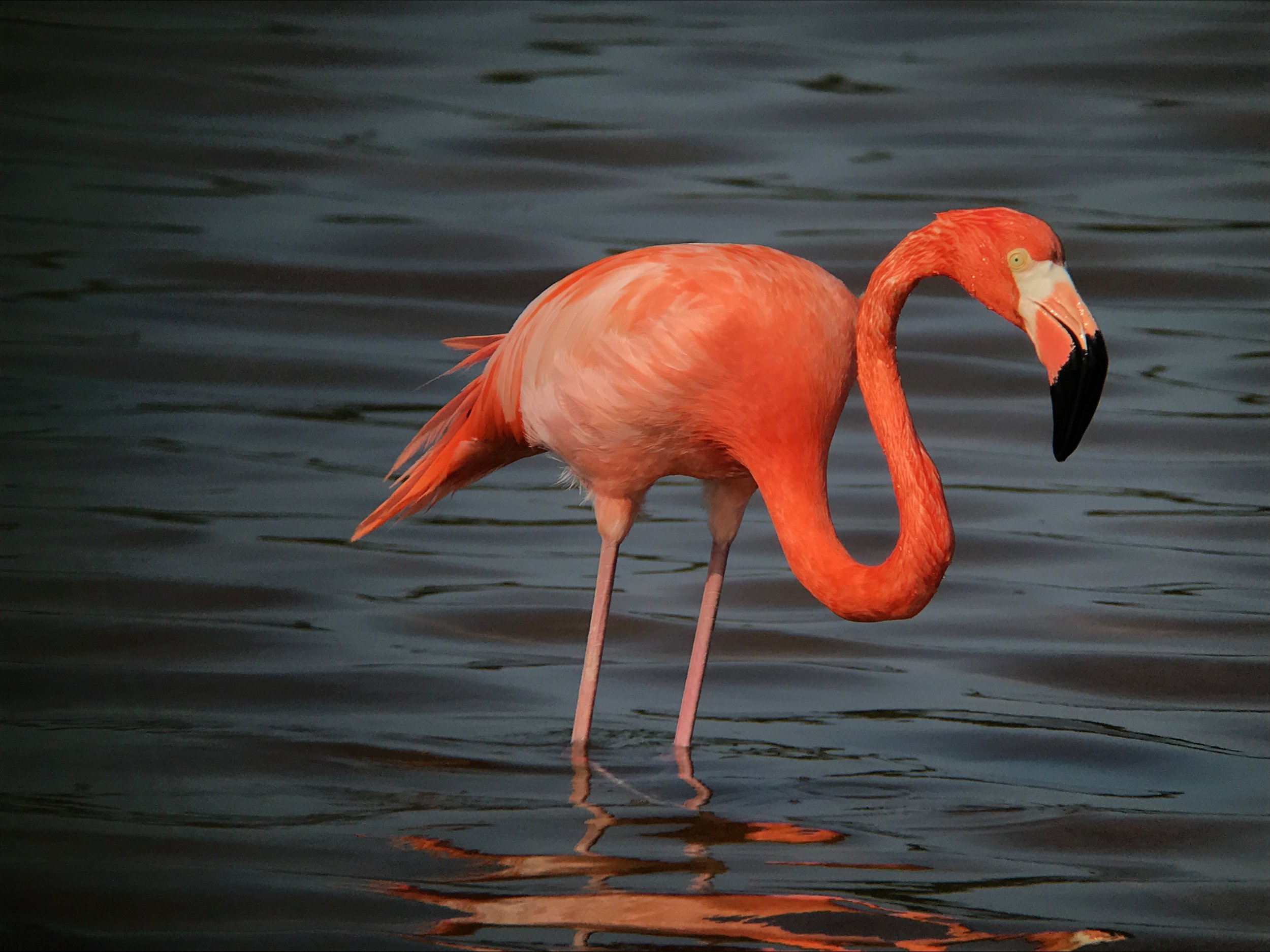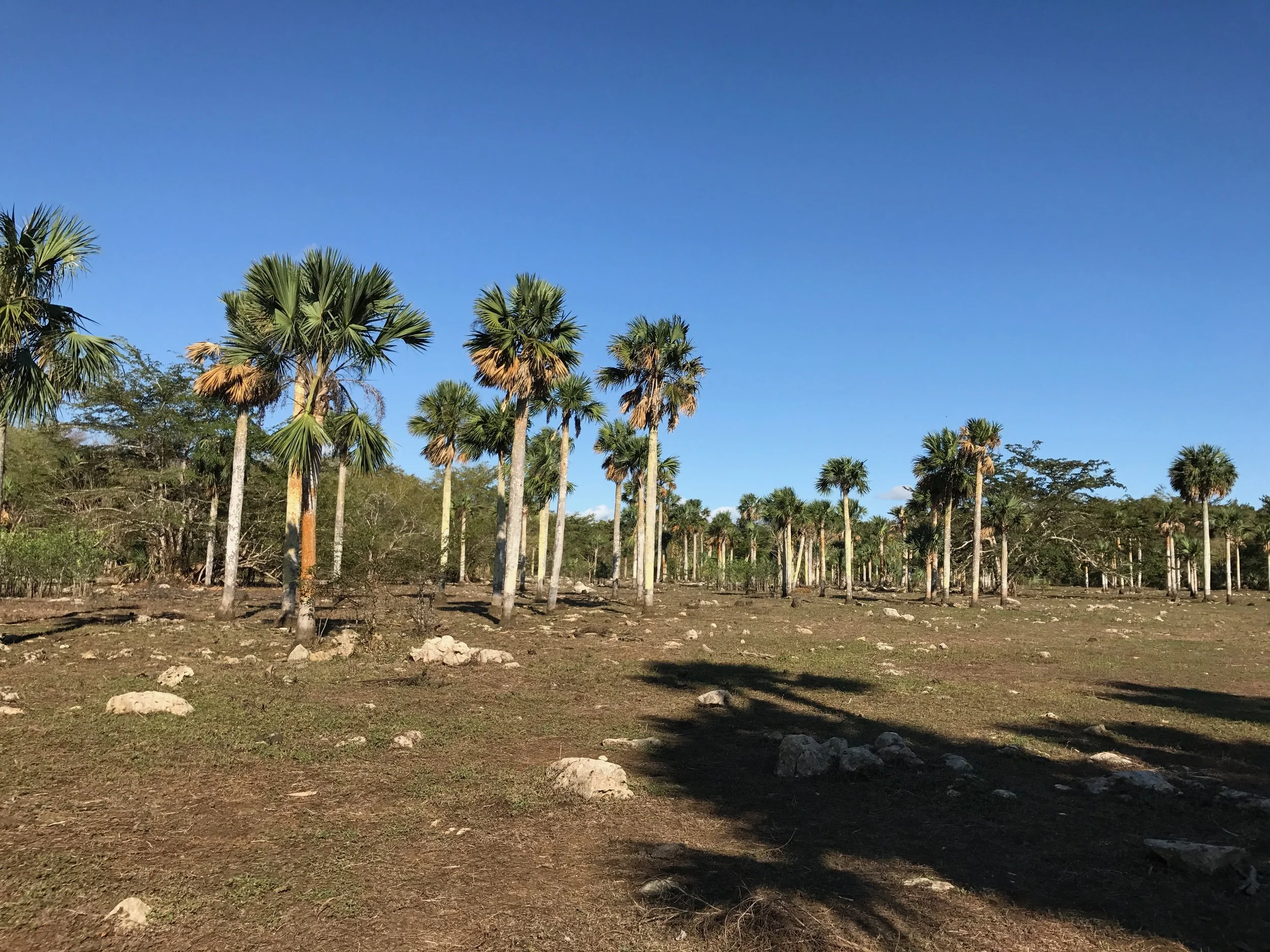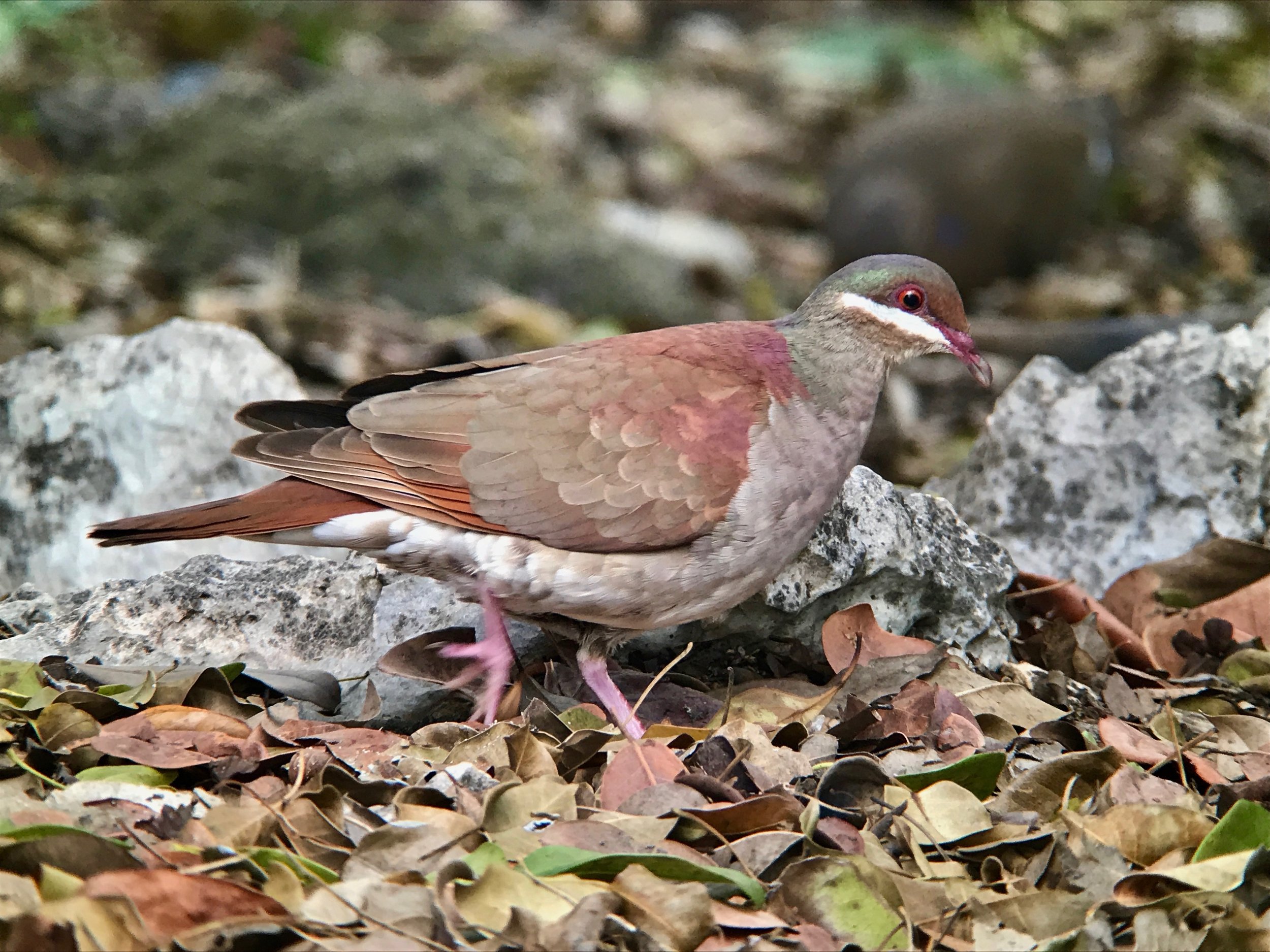There is quite a bit to debate when it comes to "ethical birding." You can practically make a drinking game out of arguments of taped calls and bird disturbances on your state's birding group every winter.
While taking pictures of feeding American Flamingos in Cayo Coco in Cuba, our guides told us they would be happy to make noise so the birds would fly off and we could get flight shots of the birds. We declined.
I've thought of this numerous times when in Central America and a guide used a taped call on a bird that they presumably take people to on a daily basis--or multiple guides visit on a daily basis.
I think there are times and places where taped calls can be effectively used. I would rather play a taped call for ten people who have never seen a yellow rail to get it to come out, rather than have ten people trample through rail habitat to see if one flushes.
There's definitely technique to using recorded bird calls. I wouldn't necessarily play a territory song for a species during fall migration. What works with one species may not work with another. A study in the late 70s/early 80s on how taped calls didn't interfere with nesting trogons can't be applied to Kirtland's warblers.
David Sibley was a wonderful and nuanced post on how to properly used taped calls for birds. Basically, go in with a plan and don't over use it.
When we were in Cuba, we had one overall guide and in every National Park we visited, we were required by the government to also use one of the park guides to take us in the park. They are paid, but they rely heavily on tips. And they have been taught that if people get the bird or the exact photo they want, they get better tips.
A Cuban Nightjar hidden in its roost in the woods around Soplillar. This and bare-legged owl were two big targets here.
The birding we did around the Bay of Pigs was spectacular and we explored the woods and savannas around Soplillar. One of our targets was the Cuban nightjar and our guides had one staked out, tucked away in thick vegetation. I realized when I got back to the states that I had heard one at night...they just sound more like a frog than a nightjar. We were a respectful distance away, no effort was made to clear vegetation out of the way for photos. Sure my pictures isn't going to end up in National Geographic, but I like how the branches obscure the bird, it takes me back to the moment when I saw it.
Just beyond those palms was a bare-legged owl.
The other target was a bare-legged owl. The guides knew where one was in a nesting/roosting cavity. They set us up around the deal palm tree pockmarked with woodpecker holes. They told use to aim our binoculars and cameras at a certain hole and then they would get it out. I'm familiar with a survey technique at roost/nesting cavities where you lightly tap on the trunk of a tree like a woodpecker and an irritated owl will poke its head out. I assumed that was what would happen here. I was not prepared for what happened and quickly switched to video when I realized what they were doing.
Yep, the local guide just started violently shaking the palm tree. The tree was in such decay that I was worried it would get pushed over. Sure I could have gone on a tirade, but white lady yelling at people in their own country about what they do is a role I never wish to have. I tried to offer some diplomatic advice as one professional guide to another.
"Hey," I said casually, "there's a technique that you can try where you just tap the tree lightly like a woodpecker. That might be a bit easier on the owl than shaking the tree."
The guide agreed and said that that is what he used to do and the bird stopped responding. Then they started to shake the tree a little and after awhile that stopped working. Now they have to shake very hard to get it to appear. Sigh.
I was amazed that the birds hadn't abandoned the cavity all together. Perhaps they had gotten used to some disturbance? Maybe cavities are so rare that they put up with it? The owl shared the tree with a nesting West Indian woodpecker as well. Based on the woodpecker behavior it clearly had a nest in the tree. There would be lots of noise and pecking that comes with a woodpecker nest that perhaps the owl is resigned to a life of daily disturbance?
There were times when other taped calls were used and I had to get the local guide to stop. Later in our trip we were out looking for a Key West quail-dove. When we arrived we heard a mangrove cuckoo--as species you can only get around Everglades or Biscayne National Park in the Unite States. Our guide of the day immediately started playing the call over and over and over.
I calmly suggested that maybe he should turn it off for a minute--give the actual bird a chance to assess the situation. But he continued. And this went on for several minutes. Not only was I irritated that my request was ignored, but I could tell the rest of my group was uncomfortable with the relentless playing or just downright bored when there were other things to be seen. I finally went to our main guide and said, "Tell him to stop, that bird is not going to come out. They don't call over and over like that."
Sometimes when people play a call nonstop or play it too loudly, the target bird will clam up and hide. The bird may be confused or threatened by the sound, "What is with that crazy sound, I don't sound like that, is this dangerous?" Some birds will hear a call once and clam up. Then it's up to you to wait--sometimes as much as 15 minutes and the bird will come out when it sees the coast is clear.
Key West quail-dove.
I suggested that we give up on the mangrove cuckoo, look at some other birds and maybe the cuckoo would come out while we focused on other things. Soon enough we found the original target of the day, the Key West quail-dove. And about ten minutes into enjoying that bird guess who popped out...
Mangrove cuckoo.
It was one of the best looks at mangrove cuckoo I've ever had. It casually fed in the tree, it preened--something birds only do when they don't feel threatened and are comfortable in their surroundings. Everyone had ample time for photos and video. The bird just needed time to get past all the calls.
I don't blame the guides. Clearly what has happened is that people have come before us and pressured the guides with their tips to get them exactly what they wanted to see or photograph. The guides depend on those tips and will do what they need to do take care of their families.
I referenced earlier that a guide offered to flush some flamingos so we could get flight shots and my group unanimously declined. We were content to watch and photograph them feeding. The birds were fairly close and comfortable with us. And they got so relaxed I got one of my favorite shots.
Look at that shiny flamingo cloaca!
I don't mean to pick on Cuba. Birding tourism is relatively new for them. There hasn't been the decades of birding like there has been in the US or the UK. Some of the top guides in Panama, Costa Rica and Honduras have had the chance to come to the US and get to know more about birding ethics. But I do think it's up to us to help point this out politely. If there is something you're uncomfortable with on a tour, have a conversation about it. I don't mean yelling at a guide in the middle of a field trip, no one will listen to that, especially if their being taken to task in front of a group. But when you're sitting down with them at the end of the day and having a drink, engage in a conversation about bird behavior and share how birding happens where you live. If birders/photographers before us are setting a bad precedent, it doesn't hurt to share how birding is different in other areas.






